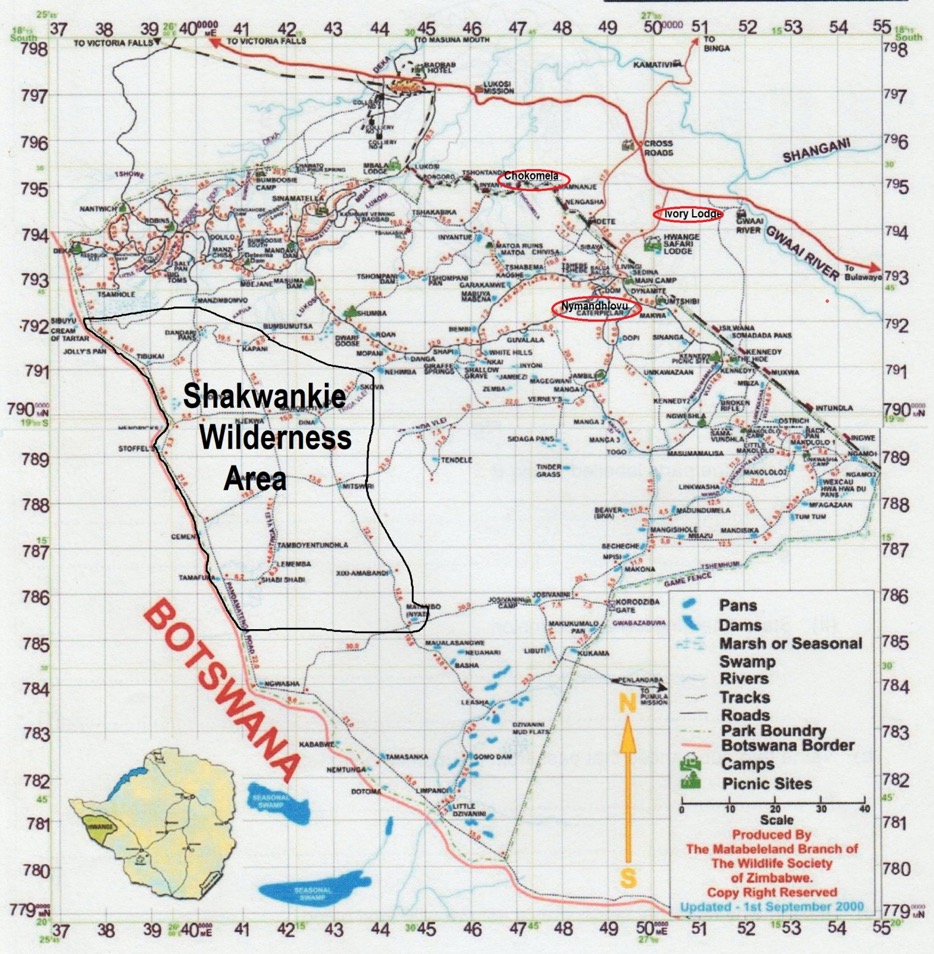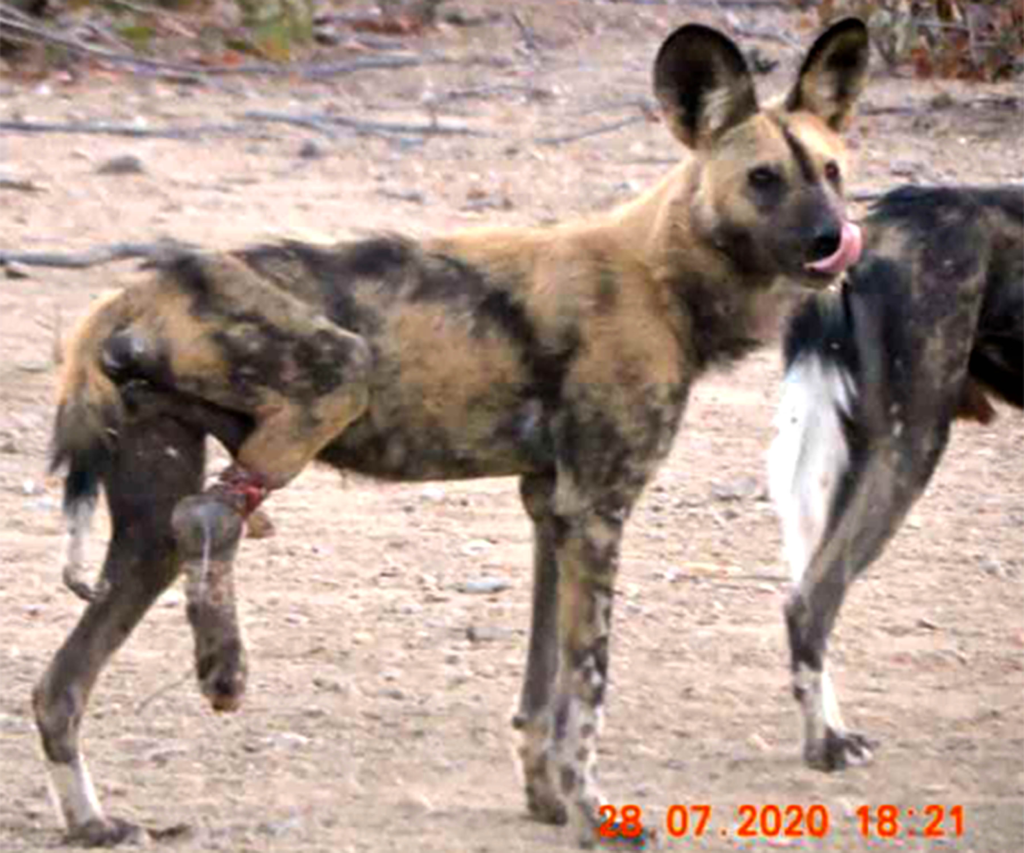
As previously reported in June 2020, more than 400 elephants died in the Okavango Panhandle area in Botswana of undetermined causes. On the 4th July Hwange Lion Research (HLR) undertook a camera trap survey in the Shakwankie Wilderness Area of Hwange National Park. This area is on the boundary of Botswana to the west and Robins Camp to the north (see map) and covers an area of approximately 1000 square kilometers. Dr Rob Rees spent two weeks with HLR for the set-up of the survey during which the area was extensively covered both in a vehicle and on foot. Thankfully, no similar deaths of elephants were found anywhere in this very dry Wilderness Area where animal populations are sparse. We shall remain vigilant.

In June 2020 a postmortem was carried out on a three-month-old elephant calf in the Ivory Lodge concession to the north east of Hwange National Park. The calf seemed to have died of natural causes (Ivory Lodge guides reported seeing it alone without a mother) but results from tests are pending.
In early August a three-year-old elephant calf was found paralysed in lateral recumbency near Nyamandhlovu Pan. Its tail was missing and in the area around the rectum there was an open purulent wound of approximately 2 weeks old – presumably from a predator attack. It is suspected that the paralysis was due to an up-tracking spinal infection from this wound.
To our knowledge no other elephant deaths have been reported in the park as yet.
Dr Rees rendered assistance to HLR in removing a snare from the neck of a male lion. The snare had not caused any damage to the animal and recovery was routine.
A request was made by Painted Dog Conservation (PDC) for assistance to remove a snare from the hind right leg of a male painted dog in the Chokomela Concession to the north of Hwange National Park. Regrettably the snare had been on the dog for about a month; the Achilles tendon was severed and the fibular was damaged. There was contracture of the muscles resulting in an inability of the leg to extend and the lower part of the leg was showing signs of necrosis. Despite agonizing pain and a useless hind leg, the dog displayed remarkable resilience and continued to hunt with his pack, but the spread of rampant infection posed a severe risk to his life.
Every individual makes a difference especially in a population that is as highly endangered as painted dogs. The animal was darted and relocated to PDC rehabilitation facility where Dr Rees assisted by Dr Clare Savage made the decision to amputate the dog’s leg mid-femur. Recovery post-surgery was amazing; the animal ate well, didn’t lick or chew at his stitches, and after 10 days to allow him to recover from the trauma, he was collared (for continued monitoring) then returned to his pack in the wild. He bolted out of his release box joyously and immediately raced off to join his companions. Without knowing his history, one would be hard-pressed to notice the absence of his right back leg at all. (Top-right Photo credit PDC)

Grateful thanks to Friends of Hwange Trust for assistance and financial support to affect this work. Appreciation to the area manager at Hwange National Park and to HLR for permission to join the survey team. Gratitude to PDC for the use of their extensive facility and to Dr. Savage for her support
Donations for wildlife in need are always most gratefully received and enable continuation of our humane initiatives.



